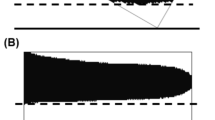Abstract
Current CAD systems are ‘part-centric’ and do not capture the underlying logic of an assembly at an abstract level. We need to make CAD systems ‘assembly-centric’. To be able to lay out, analyze, outsource, assemble and debug complex assemblies, we need ways to capture their fundamental structure in a top-down design process, including the designer's strategy for constraining the parts kinematically and locating them accurately with respect to each other. We describe a concept called the ‘Datum Flow Chain’ to capture this logic. Most assembly problems occur due to ineffective datum logic or the choice of assembly procedures that are not consistent with the datum logic, if any, that was used to design the parts. The DFC relates the datum logic explicitly to the product's key characteristics, assembly sequences, and choice of mating features, and provides the information needed for tolerance analyses. Two types of assemblies are addressed: Type-1, where the assembly process puts parts together at their pre-fabricated mating features, and Type-2, where the assembly process can incorporate in-process adjustments to redistribute variation. Two types of assembly joints are defined: mates that pass dimensional constraint from part to part, and contacts that merely provide support. The scope of DFC in assembly planning is presented using several examples. Analysis tools to evaluate different DFCs and select the ones of interest are also presented.
Similar content being viewed by others
References
Lee DJ, Thornton, AC. Key characteristics for agile product development and manufacturing. Agility Forum 4th Annual Conference Proceedings 1995
Mantripragada R, Cunningham T, Whitney DE. Assembly oriented design: a new approach to designing assemblies. Product Modeling for Computer Integrated Design and Manufacture, TC5/WG5.2 International Workshop on Geometric Modeling in Computer-Aided Design, MJ Pratt, RD Sriram, Eds., 19–23 May 1995, Airlie, VA
Lee K, Gossard D. A hierarchical data structure for representing assemblies: part 1. Computer-Aided Design 1985; 17: 15–19
Sodhi R, Turner J. Towards a unified framework for assembly modeling in product design. RPI, Troy, NY, Technical report 92014, 1992
Srikanth S, and Turner J. Toward a unified representation of mechanical assemblies. Engineering with Computers 1990; 6: 103–112
Roy U, Bannerjee P, Liu CR. Design of an automated assembly environment. Computer-Aided Design 1989; 21: 561–569
Gui J, Mäntylä M. Functional understanding of assembly modeling. Computer-Aided Design 1994; 26: 435–451
Fazio TLD, Whitney DE. Simplified generation of all mechanical assembly sequences. IEEE J. Robotics and Automation 1987; 3: 640–658
Ko H, Lee K. Automatic assembling procedure generation from mating conditions. Computer-Aided Design 1987; 19: 3–10
Wilson R. Geometric Reasoning About Mechanical Assembly. Artificial Intelligence 1994; 71: 371–396
Hart-Smith DJ. Interface Control — The Secret to Making DFMA Succeed. Society of Automotive Engineers 1997
Muske S. Application of Dimensional Management on 747 Fuselage. World Aviation Congress and Exposition Anaheim, CA, 1997
Shah J, Zhang BC. Attributed graph model for geometric tolerancing. ASME Advances in Design Automation 1992; 44-2: 133–140
Cunningham T, Mantripragada R, Lee D, Thornton A, Whitney D. Definition, analysis, and planning of a flexible assembly process. Japan/USA Symposium on Flexible Automation Boston, MA, 1996
Mello LSHD. Task sequence planning for robotic assembly. PhD dissertation, Electrical and Computer Science Department, Carnegie Mellon University, 1989
Bourjault A. Contribution a une approche methodologique del'assemblage automatise. PhD dissertation, Universite de Franche-Comte, 1984
Baldwin DF. Algorithmic methods and software tools for the generation of mechanical assembly sequences. SM Thesis, Mechanical Engineering, MIT, 1989
Baldwin DF, Abell TE, Lui M-CM, Fazio TD, Whitney D. An integrated computer aid for generating and evaluating assembly sequences for mechanical products. IEEE Trans. Robotics and Automation 1991; 7: 78–94
Whitney DE, Gilbert OL, Jastrzebski M. Representation of geometric variations using matrix transforms for statistical tolerance analysis in assemblies. Research in Engineering Design 1994; 6: 191–210
Mantripragada R, Whitney DE. Modeling and controlling variation propagation in mechanical assemblies using state transition models. Proceedings, 1998 IEEE Conference on Robotics and Automation
Nevins JL, Whitney DE. Concurrent Design of Products and Processes McGraw-Hill, New York, 1989
Adams JD. Feature-based Analysis of Selective Limited Motion in Assemblies. MS Thesis, MIT Mechanical Engineering Department, 1998
Mantripragada R. Assembly Oriented Design: Concepts, Algorithms, and Computational Tools. PhD Thesis, MIT Department of Mechanical Engineering, 1998
Wang N, and Ozsoy T. Automatic generation of tolerance chains from mating relations represented in assembly models. ASME Advances in Design Automation 1990; 23(1): 227–232
Shalon D, Gossard D, Ulrich K, and Fitzpatrick D. Representing geometric variations in complex structural assemblies on CAD systems. ASME Advances in Design Automation 1992; 44(2): 121–132
Zhang G, Porchet M. Some new developments in tolerance design in CAD. ASME Advances in Design Automation 1993; 65(2): 175–185
Frey DD, Otto KN. The process capability matrix: a tool for manufacturing variation analysis at the systems level (DETC97/DFM-4348) Proceedings of DFM: Design for Manufacturing Conference September 14–17 1997, Sacramento CA
Munk C, Strand D. AFPAC — Accurate Fuselage Panel Assembly Cell. SAE paper 922411, Aerofast 92, October 13–15 1992, Bellevue, WA
Kriegel JM. Exact Constraint Design. ASME Paper 94-WA/DE-18, 1994 ASME Winter Annual Meeting, Chicago, IL, November 1994
Author information
Authors and Affiliations
Rights and permissions
About this article
Cite this article
Mantripragada, R., Whitney, D.E. The Datum Flow Chain: A systematic approach to assembly design and modeling. Research in Engineering Design 10, 150–165 (1998). https://doi.org/10.1007/BF01607157
Issue Date:
DOI: https://doi.org/10.1007/BF01607157




